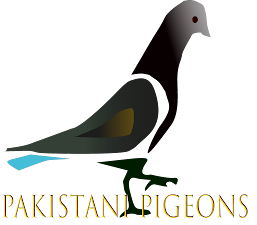Pakistani pigeons, renowned for their exceptional flying abilities, hold a special place in the hearts of pigeon enthusiasts around the world. These high-flying breeds, with their impressive endurance, grace, and navigational skills, have captivated the attention and admiration of pigeon fanciers for generations. In this essay, we will explore the world of high-flying Pakistani pigeons, discussing their breeds, training techniques, competitions, and the deep cultural significance they hold in Pakistan.
Pakistan is home to several breeds of high-flying pigeons, each known for its unique characteristics and flying prowess. One of the most prominent breeds is the "Tippler pigeon." Tipplers are known for their remarkable ability to stay aloft for extended periods, sometimes exceeding several hours in flight. They are medium to large-sized pigeons, with long wings and strong muscles, enabling them to achieve sustained flight. Tipplers are highly valued for their endurance and are often trained to fly in flocks, creating impressive aerial displays in the sky.
Another popular high-flying breed in Pakistan is the "Kabuli pigeon." Originating from Kabul, Afghanistan, these pigeons have a distinct appearance, characterized by their compact bodies and powerful wings. Kabuli pigeons are renowned for their agility and swift flight. They are often trained to perform intricate aerial acrobatics, including spins, loops, and dives, making them a captivating sight to behold.
The "Qasoori pigeon" is yet another esteemed breed known for its flying abilities. Qasoori pigeons are medium-sized and possess strong wings that allow them to soar to great heights. They are trained to fly in a disciplined manner, maintaining formation and synchronizing their movements. Qasoori pigeons showcase excellent navigational skills and are capable of flying back to their lofts from considerable distances.
Training plays a vital role in nurturing the flying abilities of Pakistani pigeons. Pigeon fanciers invest significant time and effort in conditioning and developing their birds' flying skills. Young pigeons are gradually introduced to flying and are encouraged to build their stamina and endurance through regular exercise. The training process involves gradually increasing the duration and distance of flights, allowing the pigeons to strengthen their wing muscles and develop their navigational instincts.
To enhance their flying abilities, pigeons are often flown in groups, known as "kits" or "flocks." Flying in a kit provides a sense of security and competition, as the pigeons strive to maintain their position within the group. Fanciers employ various techniques to encourage flock cohesion and synchronized flight, such as using flags or kites to guide the birds and playing specific sounds to direct their movements.
Pakistani high-flyers are not only trained for their flying abilities but also participate in competitive events and exhibitions. These events allow fanciers to showcase the skills of their pigeons and provide a platform for enthusiasts to come together, exchange knowledge, and appreciate the beauty of high-flying pigeons. Competitions often involve measuring flight duration or altitude, with the pigeons judged based on their performance and adherence to specific flying standards.
The cultural significance of high-flying pigeons in Pakistan cannot be understated. Pigeon flying, known as "Kabootarbazi" or "Baazi," has a long-standing tradition in the country, deeply ingrained in its cultural fabric. Pigeon fanciers, often belonging to specific neighborhoods or communities, take immense pride in their pigeons and engage in friendly rivalries and competitions. The art of flying pigeons is passed down through generations, with knowledge and techniques shared among families and enthusiasts.
High-flying pigeons also play a significant role in promoting camaraderie and social cohesion within communities. Pigeon flying clubs and associations serve as hubs for enthusiasts to gather, exchange experiences, and organize events. These gatherings foster a sense of belonging and provide a platform for mentorship, where experienced fanciers pass on their expertise to the next generation.
Beyond their recreational value, high-flying pigeons have also been recognized for their potential in scientific research. Their flying capabilities and navigational skills have been studied to gain insights into animal behavior, migration patterns, and orientation mechanisms. Pigeons have been equipped with small GPS devices and other tracking technologies to study their flight paths and unravel the mysteries behind their navigational prowess.
In conclusion, Pakistani high-flying pigeons are a source of pride, skill, and cultural significance in the country. These remarkable birds, including Tippler, Kabuli, and Qasoori breeds, showcase impressive flying abilities, endurance, and navigational skills. Through dedicated training, competitions, and community engagement, pigeon fanciers in Pakistan preserve and celebrate the rich tradition of high-flying pigeons. The deep connection between the people of Pakistan and their high-flying pigeons highlights the cultural importance of these birds and exemplifies the profound bond between humans and the avian world.







0 Comments